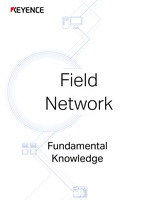Network Hierarchy (OSI Model)
The original goal of networking was to connect computers and other devices together. But as individual companies developed their own networks, the network connections became more complicated, so a universal network model was created for coordinated usage. This model was called the Open Systems Interconnection (OSI) model. The OSI model is split into seven different layers with each layer defining a different role.
- OSI model overview
- Physical layer
- Data link layer
- Network layer
- Transport layer
- Session layer
- Presentation layer
- Application layer
OSI model overview
Developed by the International Organization for Standardization (ISO), the OSI model categorizes communication functions into a hierarchy. This communication hierarchy is expressed with seven different layers. The lower layers are hardware-based, and the higher layers are more software-based.
| Level | OSI reference model |
|---|---|
| Layer 7 | Application layer |
| Layer 6 | Presentation layer |
| Layer 5 | Session layer |
| Layer 4 | Transport layer |
| Layer 3 | Network layer |
| Layer 2 | Data link layer |
| Layer 1 | Physical layer |
A similar TCP/IP protocol hierarchy model with four layers also exists, but this model is based on the OSI model and is specified as a communication method model.
Physical layer
This layer includes the physical aspects needed to transmit signals.
In particular, the physical layer defines the voltage level, switching timing, transmission rate, transmission distance, and connector shapes.
Data link layer
The data link layer defines the protocols and other aspects necessary for creating a bridge between the physical layer and the network layer. The physical addresses, data frame checks, send/receive flow management, and corresponding topologies are defined in this layer.
Flow control is performed in various ways, including by checking the frame of data received in the physical layer and transmitting an error if there is a problem, and entering standby mode when the destination is not ready to receive data even if data being sent from the network layer has been received.
Network layer
In the network layer, network addresses (different from MAC addresses) are defined to enable selection of the communication path. The route for data being sent and received through Ethernet switches and similar devices is determined in the network layer before the data is transmitted.
Transport layer
The transport layer defines the most efficient way to bridge data from the session layer to the applicable network layer. Every physical circuit layer is regarded as multiple virtual circuits, and these virtual circuits can be used for establishing, monitoring, or disconnecting the connections to each network.
Retry requests for repairing errors in the event of transmission data errors and other factors are also defined in the transport layer.
Session layer
The session layer is responsible for management operations such as starting and ending processes from the application layer. Utilizing the command-response method makes it possible to track how far such exchanges have progressed.
Presentation layer
In the presentation layer, the data being sent to the session layer is encoded and encrypted so that being aware of syntax differences is not necessary in the application layer. Data converted and transmitted in the presentation layer is re-converted and restored upon reception. This makes it possible to guarantee that the data is recognized correctly in the application layer.
Application layer
The application layer is defined as the user interface, which is responsible for managing functions such as identifying communication destinations and synchronizing communication.





